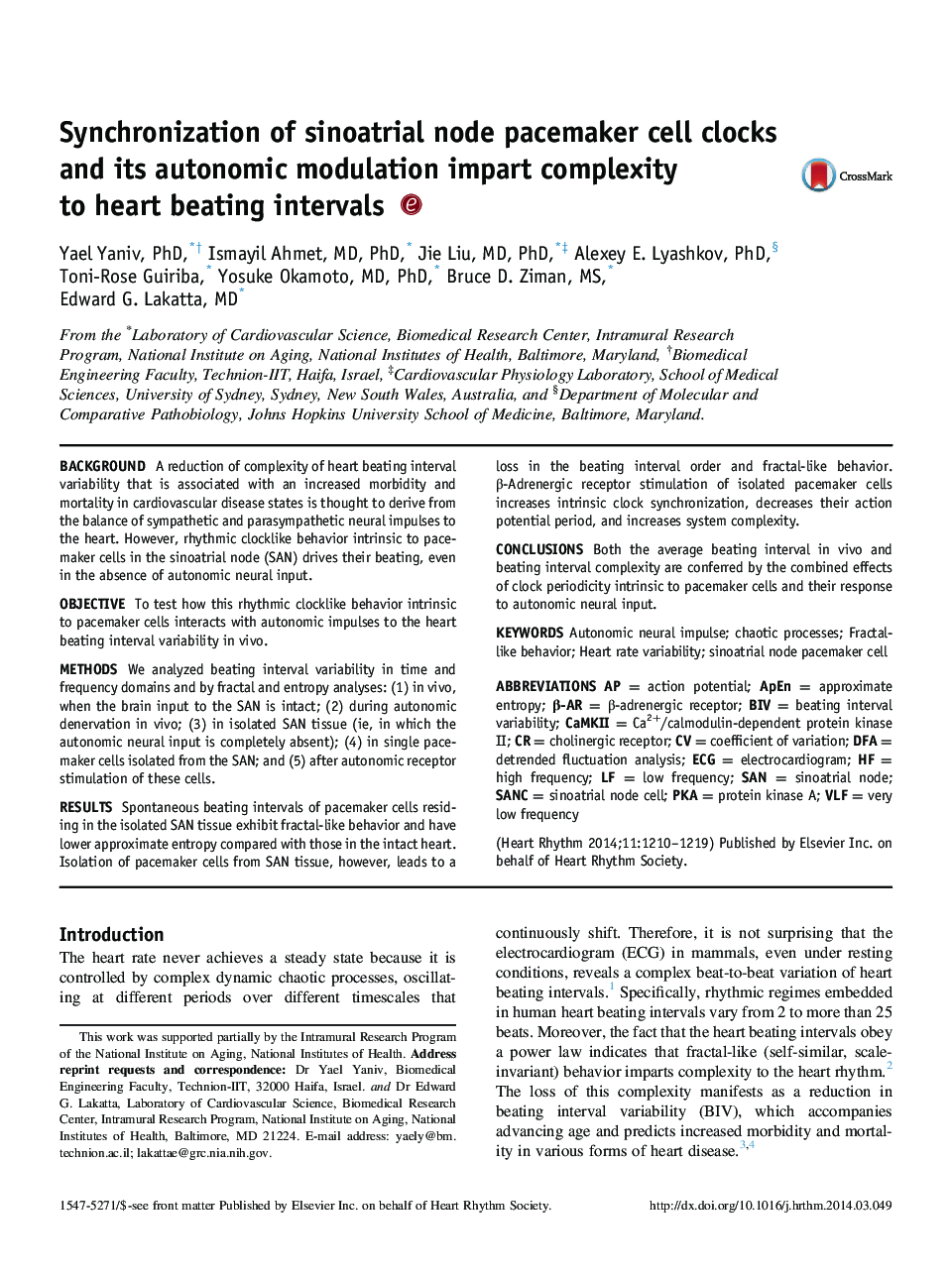| Article ID | Journal | Published Year | Pages | File Type |
|---|---|---|---|---|
| 2922001 | Heart Rhythm | 2014 | 10 Pages |
BackgroundA reduction of complexity of heart beating interval variability that is associated with an increased morbidity and mortality in cardiovascular disease states is thought to derive from the balance of sympathetic and parasympathetic neural impulses to the heart. However, rhythmic clocklike behavior intrinsic to pacemaker cells in the sinoatrial node (SAN) drives their beating, even in the absence of autonomic neural input.ObjectiveTo test how this rhythmic clocklike behavior intrinsic to pacemaker cells interacts with autonomic impulses to the heart beating interval variability in vivo.MethodsWe analyzed beating interval variability in time and frequency domains and by fractal and entropy analyses: (1) in vivo, when the brain input to the SAN is intact; (2) during autonomic denervation in vivo; (3) in isolated SAN tissue (ie, in which the autonomic neural input is completely absent); (4) in single pacemaker cells isolated from the SAN; and (5) after autonomic receptor stimulation of these cells.ResultsSpontaneous beating intervals of pacemaker cells residing in the isolated SAN tissue exhibit fractal-like behavior and have lower approximate entropy compared with those in the intact heart. Isolation of pacemaker cells from SAN tissue, however, leads to a loss in the beating interval order and fractal-like behavior. β-Adrenergic receptor stimulation of isolated pacemaker cells increases intrinsic clock synchronization, decreases their action potential period, and increases system complexity.ConclusionsBoth the average beating interval in vivo and beating interval complexity are conferred by the combined effects of clock periodicity intrinsic to pacemaker cells and their response to autonomic neural input.
